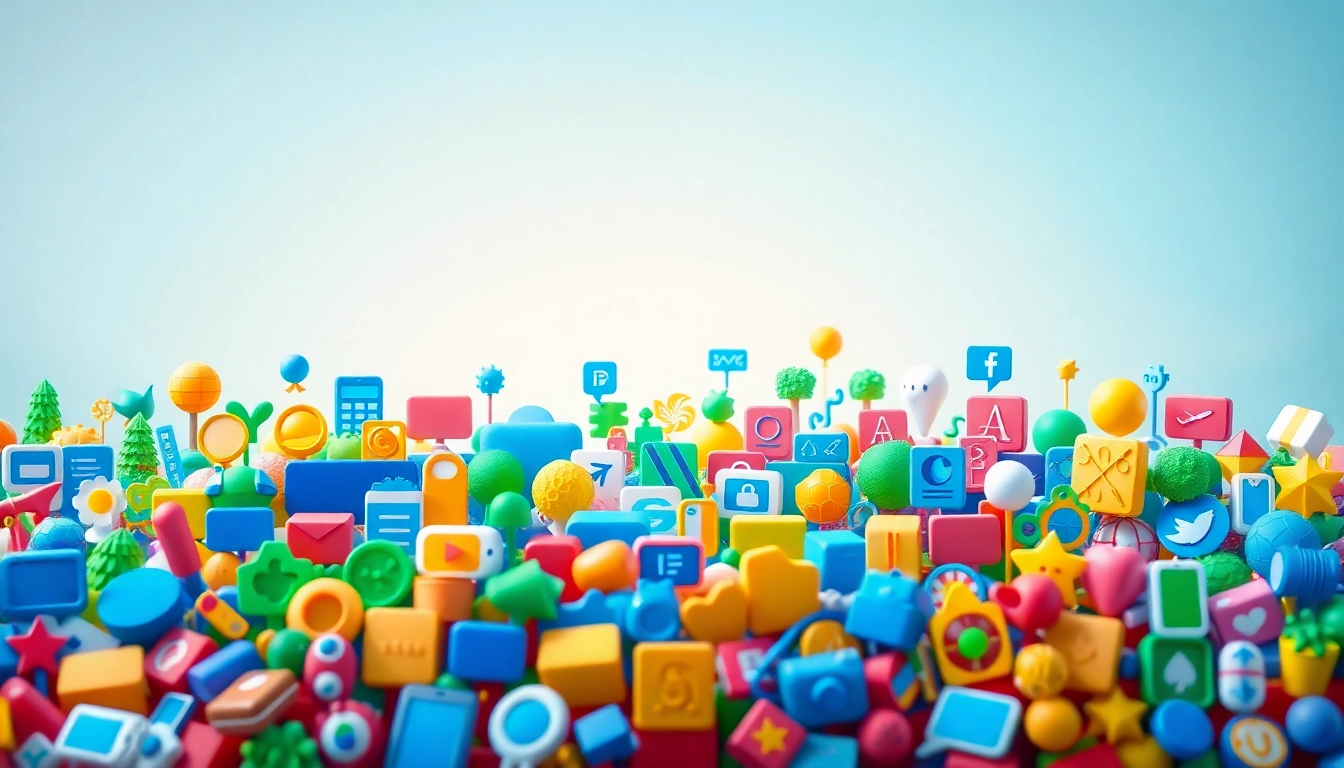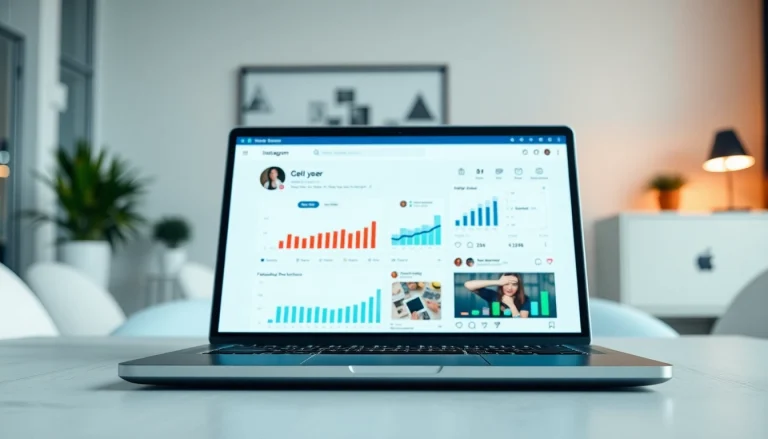Understanding Icons: Definition and Importance
Icons are visual symbols that represent ideas, objects, or actions in a simple and easily recognizable format. They are cornerstones of modern communication, especially in digital platforms where quick visual recognition can greatly enhance user experience. In a world increasingly reliant on digital communication, the use of icons has become not only common but essential for effective and efficient interaction. Understanding the multifaceted roles that icons play in communication and design is crucial for anyone aiming to create impactful work.
The significance of icons extends beyond mere decoration; they serve as an integral part of icons in branding, usability, and accessibility. Whether it’s in web design, app development, or marketing materials, icons can simplify complex information, direct user behavior, and enhance the aesthetic appeal of content.
What Are Icons?
At their core, icons are symbolic representations that convey meaning quickly. They can be seen in various forms—from simple graphical symbols used in user interfaces to complex illustrations that provide context to a specific action. Icons often translate pressure points, pathways, or functionalities in digital environments without relying heavily on text, thus making information more accessible to diverse audiences. For example, a magnifying glass icon commonly denotes a search function, making browsing intuitive across various platforms.
The Role of Icons in Digital Communication
Icons play a crucial role in digital communication by facilitating comprehension and engagement. They serve as navigational aids, helping users understand their options and the respective actions attached to them without needing to read extensive explanations. In mobile applications, for instance, users rely on icons for quick actions like messaging, calling, or sharing, often favoring visual cues over textual instructions. This behavior underscores the substantial impact icons have on user engagement and overall experience.
Benefits of Using Icons in Design
The benefits of utilizing icons in design are manifold:
- Simplification of Complex Concepts: Icons can distill intricate ideas into digestible forms, enhancing user understanding.
- Space Efficiency: Using icons instead of text can significantly reduce space usage in design, which is particularly valuable in responsive web design and mobile applications.
- Visual Appeal: Icons can enhance the visual aesthetics of a project, making it appear more polished and engaging.
- Improved Navigation: Icons can help guide users through apps or websites, providing intuitive cues that enhance user experience.
- Accessibility: Icons can bridge language barriers, making interfaces usable for international audiences or those with reading difficulties.
Types of Icons and Their Applications
Flat Icons vs. 3D Icons
Icons can generally be categorized into two major styles: flat and 3D. Flat icons have minimalistic designs without any three-dimensional effects, focusing on clarity and function. They are widely used in modern web and mobile applications due to their versatility and ease of integration throughout various design elements.
On the other hand, 3D icons provide a more immersive experience, offering depth and tactile quality that can stimulate user interest. These icons are particularly effective in applications where an engaging user interface is a top priority, such as in gaming and specialized software. Both styles have their advantages and can enhance design outcomes when used appropriately.
Application in User Interface Design
User interface (UI) design heavily relies on icons to convey functionality quickly. Icons in UI design lead users through actions effortlessly, such as saving, deleting, or navigating to different sections of an application. Effective use of icons can enhance usability by minimizing the learning curve associated with new software. For example, consistent iconography across various platforms creates a sense of familiarity, reducing cognitive load and facilitating smoother user experiences. It’s critical that UI designers consider accessibility when selecting icons, ensuring that they are distinct and interpretable by all users, including those with visual impairments.
Icons for Branding and Marketing
In branding, icons function as visual representations of a company’s identity. Logos, social media icons, and application symbols all use imagery to convey brand values and messaging. Effective icon design in branding involves a clear understanding of the brand’s ethos, customer expectations, and market trends. By harmonizing iconography with branding strategies, companies can create memorable and recognizable images that resonate with users.
In marketing, campaigns can harness icons to create visual narratives that engage audiences. Well-designed icons associated with specific campaigns can improve recall and retention of brand messages, making it easier for consumers to identify and connect with the brand in various contexts.
Creating Effective Icons: Best Practices
Size and Scalability Considerations
When designing icons, size and scalability are paramount. Icons must be legible at various scales and resolutions. Designers should utilize vector graphics (such as SVG files) wherever possible, as these maintain quality regardless of size adjustments. A general rule of thumb is to consider how the icon will appear on different devices—from large desktop screens to small mobile devices—ensuring clarity and recognizability are preserved across all formats.
Choosing the Right Color Palette
The color palette used in icon design plays a significant role in user perception and interaction. Colors can evoke emotions and emphasize functionality. For example, red typically denotes alertness or warning, while blue is often associated with trust. Thus, choosing a harmonious color scheme not only aligns with the brand’s identity but also enhances user experience. Designers should also take into account color accessibility and contrast to ensure that icons are distinguishable for all users, including those with color vision deficiencies.
Maintaining Consistency Across Designs
Consistency in icon design fosters familiarity and reliability for users. An effective icon set should utilize similar design principles—style, color, line thickness, and width—to maintain cohesion throughout a project. This unity makes it easier for users to navigate and understand the interface, as visual discrepancies can lead to confusion. To achieve this standard, designers often develop icon libraries that streamline the design process and ensure that all icons within a specific project are harmonious.
Popular Icon Resources and Tools
Free and Paid Icon Libraries
The digital landscape is rich with resources for icon creators. Numerous free and paid icon libraries offer diverse collections that cater to different design needs. Platforms such as Flaticon, Icons8, and The Noun Project provide massive databases of icons in various styles and formats. These resources can save designers considerable time and effort while ensuring that they access professionally crafted icons suited for their projects.
For those interested in customization, libraries that support vector formats (SVG, EPS) allow designers the flexibility to modify colors, sizes, and even components to fit specific design schemes.
Designing Custom Icons
While leveraging pre-made icons can be advantageous, custom icon design can provide a brand with a unique identity. Designers aiming for originality can conceptualize icons that align closely with brand messages and visual identities. When designing custom icons, it’s essential to sketch ideas, gather feedback, and iterate on designs. Tools such as Adobe Illustrator, Sketch, and Figma offer professional design capabilities that empower designers to bring their unique visions to life. Custom icons often enhance engagement since they can effectively represent the nuances of the brand or project they are associated with.
Finding Icons Suited for Your Project
Finding the right icons for your project can be a daunting task. When searching for icons, consider the context in which they will be used, as well as the audience they will engage. Specific resources, including curated icon packs, can streamline this process, allowing designers to focus on cohesive aesthetics and usability.
Additionally, many online libraries categorize their offerings, enabling users to search for icons by themes or functionalities. Utilizing search tools effectively and understanding the meaning behind certain icons can lead to more impactful design solutions.
The Future of Icons in Digital Design
Trends Influencing Icon Design
The evolution of digital design continuously shapes iconography. Trends like minimalism, flat design, and line aesthetics have influenced how icons are perceived and used in product design. As technology advances, new trends emerge, prompting designers to adapt and innovate. For instance, the growing emphasis on interactive and animated icons signifies a shift toward more dynamic engagement tools within user interfaces. Designers can now leverage animations to provide visual feedback, enhance storytelling, and guide users more effectively through digital experiences.
The Impact of AI on Icon Creation
Artificial intelligence (AI) is rapidly transforming design processes, including icon creation. AI-driven tools can automate repetitive design tasks, recommend aesthetics based on user preferences, and even generate entirely new icon sets based on contextual information. This shift allows designers to focus more on strategic and creative elements rather than labor-intensive design work. AI’s capacity to analyze user data can effectively inform icon design choices and align visual elements more closely with user needs and behaviors.
Integrating Icons with Emerging Technologies
The future of icons is also intertwined with emerging technologies such as augmented reality (AR) and virtual reality (VR). In these environments, icons must not only be visible but also provide versatile interaction capabilities that enhance user experiences. Designing icons that operate seamlessly in immersive settings presents challenges but also opportunities for innovative engagement strategies. As AR and VR technologies evolve, so too will the role of icons in establishing intuitive interfaces that guide users smoothly through new digital experiences.








